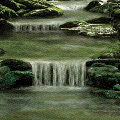 MRAUK-U
MRAUK-UMrauk-U was the capital city of 48 kings for 355 years and was founded by King Mong Saw Mon in 1430. The city offers the visitor many chances to study the cultural and traditional heritage handed down to the present day Rakhine generation by their forefathers. Mrauk U can rightfully be claimed as the “Open-air Museum” of the arts and culture of the people of Rakhine.
The Golden days of this city were between the 16th and 17th centuries and contemporary to the days of the Tudor Kings, the Moghuls, the Ayuthaya Kings and the Ava (Inwa), Taungoo and Hanthawaddy Kings of Myanmar.
The city was well-fortified with 19 mile long fortification walls, moats and natural barriers: the then war-torn Rakhines began to regard it as the “Promised Land”.
Once, more than six million shrines and pagodas flourished and there is rarely a hilltop that does not adorn itself with one pagoda or another.
After the annexation of Arakan (Rakhine) by the British, the capital was shifted to Sittwe (Akyab): since that time Mrauk-U was known by the people as Mrohaung (Old City). The name Mrohaung was given by the British when they shifted their seat of administration to Sittwe in 1826. The original name was restored in 1979.
The city is just 40 miles away by river from Sittwe and the trip takes 3 to 4 hours. There are daily flights to Sittwe from Yangon which take 2 hours via Thandwe. The boat departs from a jetty in the Sattroegya, a tributary creek of the Kaladan river and on the way there are many places of interest to be seen along the river.
The gateway to Mrauk-U is Thantara village from where the undulating hills of the city with white temples and pagodas on their tops appear within sight. The Thinghanadi creek is the city's life-blood and the boat journey ends at Aungdatt wharf.
The stone pagodas were built three and four centuries ago and many have been totally neglected for the last 150 years: the sides of the stone blocks fit compactly and are joined with cement thus resisting the absorption of ficus which are capable of reducing a brick pagoda into a shapeless heap of bricks in a few years.
The pagodas and temples built or renovated during the Myanmar governor’s rule (after the fall of Mrauk-U 1785-1825) followed the tradition of the Kunhaung architecture, with smaller pagodas built at the corners of the lower basement of a pagoda; bricks were usually used in making the receding arches. U Mra Wa and Shwegu Daung pagodas are the two examples that still survive.Gold and silver coins serve as the priceless heritage of the Mrauk-U period. The tradition of coin-making was handed down from the Vesali kings who started minting coins around the fifth century. The coins so far found are of one denomination only. Inscribed on the coins are the title of the ruling king and his year of coronation; coins before 1638 had Rakhine inscriptions on one side and Persian and Nagari inscriptions on the other. The inclusion of the foreign inscriptions was meant for the easy acceptance by the neighbouring countries and the Arab traders. Twenty-three types of silver coins and three types of gold coins have so far been found. All the kings who ascended the throne issued coins.City walls, gates, settlements, monastery sites, fortresses, garrisons and moats are the other priceless heritages left to the safe keeping of today's Rakhine people. Stone rubbles of proud mansions of that period are also priceless reminders of Rakhine glory.























No comments:
Post a Comment